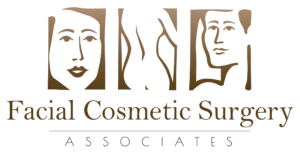Surgical “nose jobs,” more properly known as rhinoplasty, are one of the most popular cosmetic procedures being performed today. As the center point of the face, the appearance of the nose and how it relates to the shape and structure of the rest of the face can have a dramatic impact on a person’s overall attractiveness; a too large or small nose can look odd, and some people have large, bulbous tips to their nose or upturned nostrils that distract from the pleasing appearance of the rest of the face.
In addition, trauma to the nose that results in a crooked or humped nose can be corrected during a rhinoplasty procedure. However, rhinoplasty is not just for cosmetic reasons. Many people are born with or develop abnormalities of the nasal passages that make it difficult for them to breathe normally through the nose, and rhinoplasty can correct these problems and restore the nose to its normal, very important functions.
What Happens during Rhinoplasty?
Rhinoplasty is performed either under general anesthesia or under sedation and local anesthesia. Incisions are made inside the nostrils and/or along the base of the nose to access the bone and cartilage that form the underlying structure of the nose; the placement of these incisions prevents any visible scars from forming. What exactly happens during the surgery depends on what needs to be corrected or changed. The bone may be broken and reset in order to straighten it out. Cartilage may be trimmed away from some parts and moved to other parts, or just reshaped.
In some cases, bone and cartilage grafts may be necessary. Cartilage grafts can usually be harvested from inside the nose, but sometimes it is necessary to harvest cartilage from the ear or the ribs, which requires a second surgical site for harvest. If there are abnormalities of the internal anatomy of the nose affecting breathing, such as a deviated septum, these will be corrected.
What Can Be Changed?
Patients should carefully discuss their goals with the surgeon. Most surgeons these days have computer software that can take an image of a patient and allow the patient and surgeon to manipulate the features of the nose until an ideal image that pleases the patient is achieved. There is no universal standard of what the perfect nose is, and it is very important to ensure the nose matches well with the rest of the face. A nose shape that looks great on one person may look ridiculous on another person, due to the mismatch between the shape of the nose and the rest of the face. Features that can be changed include:
- Alterations of global nose size — larger or smaller overall
- Alterations of the nose width across the bridge
- Alterations of the width of the tip of the nose
- Correction of humps or depressions along the bridge
- Changes to the shape of the bridge, such as altering an arched Roman nose into a flatter nose
- Alterations of the shape of the tip of the nose
- Alterations of the shape, size, and placement of the nostrils
- Correction of a crooked bridge
- Correction of asymmetry
Correction of abnormal anatomy to improve breathing depends on the problem. The most common such issue is a deviated septum; this is a very common aberration of normal anatomy. In some individuals it causes no issues while in others it impedes air flow and/or flow of mucus from the nose and sinuses, which can lead to chronic sinus infections. Another common feature that can impede airflow is enlarged turbinates in the nasal passages that disrupt the flow of air by causing turbulence and sending inhaled air in all directions instead of down towards the lungs.
Enlargement of the turbinates can either be congenital or can develop later in life due to allergies or a respiratory infection. In addition to blocking air flow, enlarged turbinates can cause loss of the sense of smell, which can be life-threatening due to people being unaware of hazards such as smoke and spoiled food. It also seriously disrupts the ability to taste and enjoy food, and some people who have lost their sense of smell become malnourished as a result.
Many people are unaware they have a deviated septum or other anatomical feature impeding airflow and tend to just breathe through their mouth all the time without realizing this is abnormal. Frequent mouth-breathing can cause problems in the lower respiratory tract. The nasal passages warm inhaled air, humidify it, and trap pollen and small particles so they cannot enter the lower respiratory tract; mouth-breathing bypasses these protective measures.
Doctors can measure the flow of air from the nose using rhinomanometry, where a catheter is inserted into the nasal passages and detects changes in air pressure. Doctors can also insert a tiny camera into the nasal passages to actually view the internal anatomy in order to identify any abnormalities. Ultrasound, computed tomography, and MRI are also commonly used to examine the interior structure of the nose, nasal passages, and sinuses.
Indications
Anyone who is unhappy with their nose’s appearance and has completed growth of the facial area, which may not occur until the early 20s for many men, can undergo rhinoplasty. Shortly after puberty, the face tends to elongate and the chin gets larger and it is important to wait until this process is complete before considering rhinoplasty, since these changes can completely alter the appearance of the nose relative to the rest of the face. Serious abnormalities of the internal nasal anatomy that are impeding breathing can be addressed during childhood, applying a surgery that only corrects the abnormality without altering the shape of the nose.
The Procedure
Before the procedure, most patients are asked to undergo blood tests to identify any health issues that may affect their reaction to anesthesia and alter blood clotting. Patients need to refrain from smoking for several weeks both before and after the procedure, so the surgeon may ask the patient to quit smoking and verify that they have before agreeing to do the surgery. In addition, any medication that may affect clotting time, like warfarin or ibuprofen, needs to be withdrawn for two weeks before the procedure. The procedure itself may be performed in an ambulatory surgical center or a hospital. Patients are usually discharged the same day, but will need a ride home and someone to stay overnight to ensure all is well.
Recovery
After the procedure, a nasal splint and packing to support and protect the nose usually need to be worn for around a week. There will be facial bruising, black eyes, and swelling that will gradually go away over two or three weeks. There may be some minor swelling that worsens in the morning for up to six months before the final shape of the nose becomes fully apparent. Patients need to avoid strenuous activity for four weeks after surgery but can resume their normal social activities as soon as the facial bruising goes away.
Are the Results Permanent?
The results of rhinoplasty are permanent, although it is normal for the shape of the face to change somewhat during the aging process. Trauma to the face that damages the nose may require a second rhinoplasty to correct.
Anatomy of the Nose
Before consulting with our surgeon about rhinoplasty, it may be helpful to understand the basic anatomy of the nose and what the different parts are actually called so you can more fully understand what changes are being considered and communicate more readily with the surgeon.
The top part of the nose is supported by bone, with a thin strip of bone underlying the bridge of the nose. The bottom part of the nose is supported by cartilage. The parts above the nostrils are the nares, while the thin strip of tissue between the external nostrils is called the columella. Inside the nose, a sheet of cartilage separates the nasal passages leading to each nostril and this is called the septum. The nasal passages then merge into a single passage behind the septum in order to connect to the trachea, which transports air to and from the lungs.
The sinuses and tears from the eyes all drain into the nasal passage before it connects to the trachea; most of these products end up draining down the back of the mouth into the esophagus and then into the stomach to be recycled. An average healthy person produces around a quart of mucus per day. The nasal passages and sinuses are lined with a layer of epithelium that is covered by cilia, like tiny tails that stick out of the epithelial cells and move back and forth to push the mucus down and out of the nasal passages.
Inhaled particles and pollen become trapped in the mucus and are sent to the stomach in order to protect the lungs. In addition to producing mucus, the cells lining the nasal passages produce water vapor to humidify the inhaled air; an estimated twenty percent of a person’s daily water intake is diverted to this purpose. The humidified air helps maintain the health of the lungs, particularly in drier climates.
If you are unhappy with the shape of your nose, either due to how it developed or due to facial trauma, consider making an appointment today to discuss what rhinoplasty can do for you. If you find you mouth-breath a lot or get a lot of sinus infections, also consider making an appointment to have your nasal passages examined in order to identify any possible abnormalities. These abnormalities can be corrected during a functional rhinoplasty and greatly improve your quality of life.
Visit our team here at Kaniff Cosmetic Medical Center in Sacramento, CA to learn more about this procedure. Contact us today to schedule your consultation!


